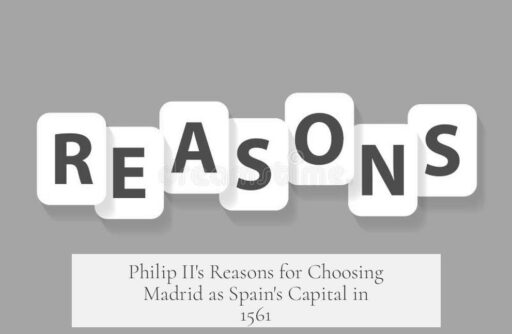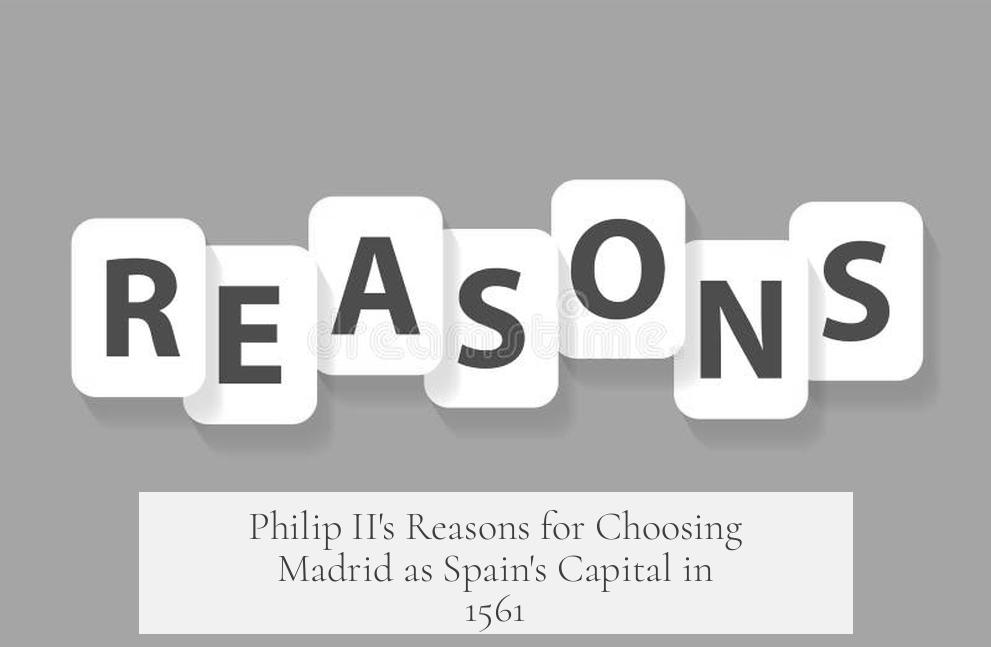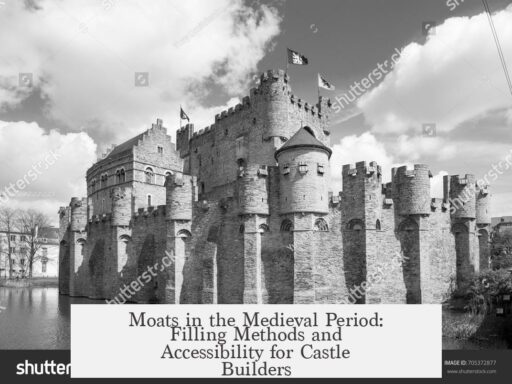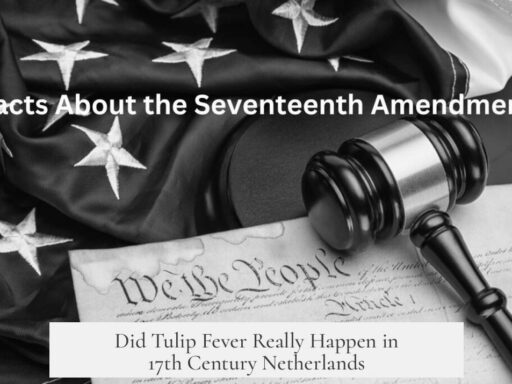Philip II chose Madrid as Spain’s capital in 1561 due to its central location, royal jurisdiction, absence of strong local powers, religious stability, proximity to academic resources, potential for growth, geographic protection, and royal leisure interests.

Madrid’s central position in Spain stood out. It lies almost in the middle of the peninsula. This centrality allowed acceptable communication times with important ports such as Valencia, Santander, Bilbao, Seville, and Barcelona. The king and his court could receive news from these key cities without major delays. If the court were in a coastal city like Seville or Barcelona, news from distant ports would arrive late, hindering quick decision-making.
The royal jurisdiction factor proved crucial. Unlike Toledo, which belonged to the powerful Archbishop of Toledo, Madrid was directly under the king’s control. Toledo’s independence posed risks to monarchical authority if it became the seat of the court. Philip II sought a city where his power was absolute, ensuring no rival local authority could challenge the crown. Madrid already contained the Alcázar palace, a suitable royal residence, reinforcing its appeal as a capital.

Madrid also lacked entrenched local oligarchies. Cities such as Seville, Valencia, Burgos, and Valladolid had strong local factions. These groups often wielded great power and could threaten royal control if the monarch resided there. By choosing Madrid, Philip prioritized a fresh start where local elites could not dominate. This strategic choice supported a centralized, stable administration.
Religious orthodoxy played a role. In the 16th century, Spain faced Protestant incursions, especially in cities like Seville and Valladolid, which experienced notable Protestant circles. Madrid did not have these religious dissident groups. This stability aligned with Philip’s religious policies and offered peace of mind knowing the capital would not harbor religious dissenters.

Another key advantage came from proximity to Alcalá de Henares. This town, five or six leagues from Madrid, hosted a flourishing university. The University of Alcalá supplied the court with a steady stream of skilled jurists, lawyers, judges, and bureaucrats. These professionals were critical for effective governance. Alcalá’s status as one of Spain’s major universities cemented Madrid’s administrative benefits.
Madrid’s suitability for growth and resources also factored in. The city had ample space for expansion, which was important for a growing capital and its institutions. Water availability was abundant, with the Manzanares river and streams like the Abroñigal. The name “Madrid” actually derives from “Magerit,” meaning “rich in water” in Arabic. Quality water supply was essential for the city’s long-term sustainability.

The king’s personal interests also influenced the choice. Madrid sits near the El Pardo forest, a renowned hunting ground. Philip II enjoyed hunting, following a royal tradition from his father. The proximity to this leisure area added a practical, pleasurable dimension to selecting Madrid as the court’s residence.
Geographical defense mattered too. Madrid is surrounded by mountain ranges on almost all sides. This natural barrier made it difficult for invading armies to reach the city. For Philip II, whose enemies included France, England, and the Ottomans, mountainous terrain provided a strategic advantage. Armies would struggle against both terrain and local resistance on the way to Madrid.

| Factor | Description |
|---|---|
| Centrality | Central position allowed timely communication with key ports |
| Royal Jurisdiction | City under king’s control, avoiding rival local authorities |
| Weak Local Oligarchies | Lacking strong factions that could threaten royal control |
| Religious Stability | No significant Protestant presence to challenge orthodoxy |
| Proximity to University | Close to Alcalá de Henares University providing specialists |
| Growth and Water | Room for expansion and reliable water supplies |
| Hunting Grounds | Near El Pardo forest, favored royal hunting location |
| Geographic Protection | Surrounded by mountains, offering defense against invasions |
- Madrid’s geographic centrality improved communication across Spain.
- Its direct royal control avoided local powers undermining the crown.
- The city lacked strong factions that could challenge the monarch.
- Religious orthodoxy in Madrid ensured stability.
- Close ties to Alcalá de Henares university supported trained officials.
- Ample space and water supported sustainable growth.
- Nearby hunting grounds aligned with royal leisure interests.
- Mountainous surroundings provided natural defense for the capital.
These combined factors made Madrid a logical and strategic choice for Philip II to establish the Spanish capital in 1561. The decision reinforced royal authority and supported Spain’s central governance during a politically and religiously complex period.
Why Did Philip II Choose to Make Madrid the Capital of Spain in 1561?
Philip II chose Madrid as Spain’s capital in 1561 mainly due to its perfect centrality, strategic advantages, and political practicality. Madrid was the sweet spot where geography, politics, and royal control intersected, offering a unique blend of benefits that no other city could match at the time. But let’s dig deeper into why this seemingly quiet, somewhat middling town became the beating heart of one of the world’s greatest empires.
Imagine you’re a 16th-century king with an empire sprawling across continents. You need your capital strategically placed so you can get news fast, rule firmly, and live comfortably without endless travel. Philip II recognized this and found Madrid ticked all the boxes.
Right in the Middle of Somewhere Important
The first and most obvious point is its central location. Positioned smack dab in the middle of Spain, Madrid was like the yolk in an enormous omelet, as chronicler Gonzalo Fernández de Oviedo described. It wasn’t exactly a hop, skip, and a jump from the major ports like Valencia, Santander, or Seville, but it was close enough that messages could travel reasonably quickly.
Picture this: If Philip had set his court in Seville, by the time news from Bilbao or Santander arrived, it might be ancient history by royal standards. If it was Barcelona, updates from Seville lagged. Madrid offered balance. It kept the king sufficiently connected to every corner of his realm without playing favorites. In a time when getting the latest news was literally a matter of national security, this was a game-changer.
Keeping Power Close and Strong
Another crucial factor was royal jurisdiction. Madrid was under direct royal control, unlike Toledo, where the influential Archbishop ruled large swaths of land and villages. Imagine trying to run a kingdom from a city where your power could be overshadowed by a powerful religious magnate. Not ideal.
Madrid already housed the Alcázar—an impressive royal palace—which gave Philip a home base designed to assert his dominance. Unfortunately, this palace was lost to fire in the early 1700s, but at the time, it made Madrid a natural seat for royal life. This wasn’t just about pomp; it was about power.
A Blank Slate to Start Fresh
Philip II wanted to end his father’s wandering court tradition. He sought a stable, centralized location. Settling in cities like Seville or Valladolid could mean bowing to established, powerful local oligarchies. These groups could challenge the king’s authority right under his nose.
Madrid lacked such entrenched factions. It was a political clean slate, perfect for Philip’s vision of a disciplined, centralized monarchy. No rival power players meant fewer headaches and less chance of interference. The king was the king in Madrid, plain and simple.
Religion: Keeping Trouble Out of Sight
Religion played a quiet but crucial role. Spain had just cracked down hard on Protestant circles in cities like Seville and Valladolid. Madrid didn’t have noisy protestant groups to disrupt royal peace, making it a calm religious environment. No need for Philip to juggle inquisition dramas at home.
Nearby Alcalá de Henares, close enough to Madrid, had a university known for training jurists and royal officials but had some Protestant activity. However, it was far enough to keep Madrid serene but close enough to benefit intellectually.
The Wisdom of Being Close to a University Town
Speaking of Alcalá, its university provided a key advantage. In the 16th century, running a kingdom wasn’t just about swords and crowns. It was also about law, paperwork, and a well-oiled bureaucracy. Jurists and lawyers graduated from Alcalá, feeding the royal court’s need for savvy officials who could run things smoothly.
Madrid’s proximity to this fountain of knowledge was like having a think-tank a few leagues away. It ensured the king’s administration had a steady pipeline of educated talent.
Space to Grow and Fresh Water, Please
Madrid wasn’t a cramped, overcrowded city. It had ample room to expand, which is vital for any capital planning to thrive for centuries. Plus, water mattered—a lot. The Manzanares River and streams like Abroñigal meant a reliable supply of quality water.
Here’s a fun fact: Madrid’s name comes from “Magerit,” an Arabic word that roughly means “rich in water.” Not exactly the driest spot on Spain’s map. History shows people know their water, and Philip’s choice reflects smart planning for long-term sustainability.
Hunting Grounds Just Around the Corner
Now for a royal touch: Philip loved hunting. El Pardo, close to Madrid, had been a famed hunting ground for centuries. This mattered more than one might think. A king’s pastimes often influence big decisions. Being near prime hunting preserves was a perk consistent with the royal lifestyle.
Natural Fortifications: Mountains to the Rescue
Lastly, Madrid was protected by surrounding mountain ranges. These natural barriers made attacking the capital a nightmare for any invading army. Given Philip’s enemies included France to the north and maritime powers like England and the Ottomans, geographical defense was a strategic bonus.
An army marching from the Pyrenees or the sea would have a tough time advancing to Madrid, giving the king’s forces time to prepare defenses or counterattacks. It was a fortress city waiting to happen.
Wrapping It Up: A Capital Made in Heaven?
Putting it all together, Madrid was the blend of centrality, royal authority, political neutrality, religious peace, intellectual proximity, space for growth, natural defense, and even royal leisure that Philip II needed. It wasn’t just a random choice but a careful selection to strengthen Spain’s monarchy and governance.
So next time you stroll through Madrid’s bustling streets, think back to 1561 and the reasons why a king decided this modest city would one day become the heart of an empire. It’s a tale of geography, politics, power, and a king who knew how to pick his throne city wisely.
“Madrid wasn’t just the king’s new address; it was Spain’s political and strategic masterstroke.”




